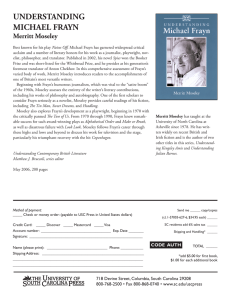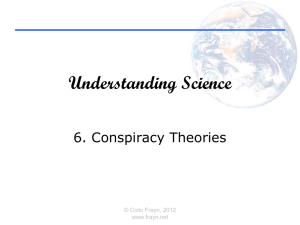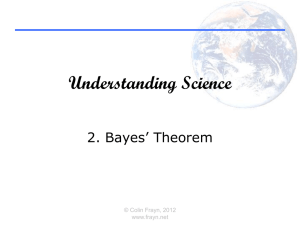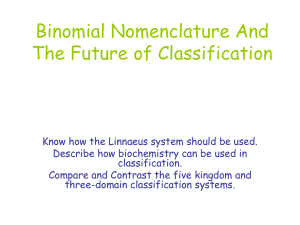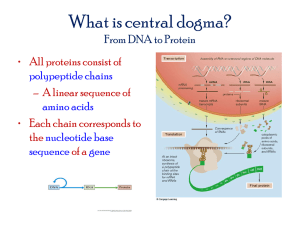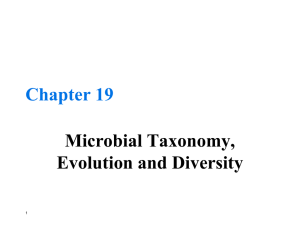Abiogenesis
advertisement
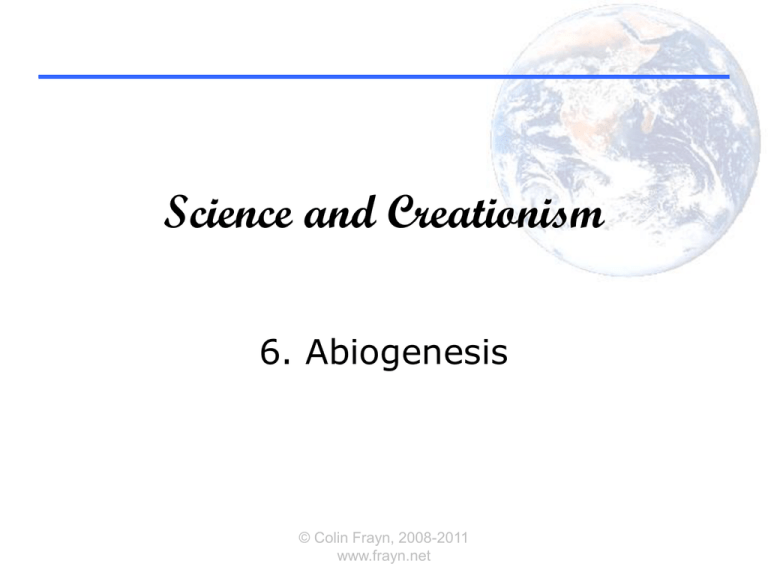
Science and Creationism 6. Abiogenesis © Colin Frayn, 2008-2011 www.frayn.net Abiogenesis • Literally, the emergence of life from non-living origins • This is organic chemistry, not biological evolution • There are several competing ideas • Bottom line: we really don’t know how this happened yet • Yes, science has the guts to say “we don’t know”! © Colin Frayn, 2008-2011 www.frayn.net Miller-Urey • Stanley L. Miller & Harold C. Urey – 1953, University of Chicago • Experiment designed to simulate the early Earth • Synthesised organic compounds – The building blocks of life • First of many experiments – Using varying atmospheric assumptions – All 20 necessary amino acids can be synthesised easily © Colin Frayn, 2008-2011 www.frayn.net Miller-Urey Apparatus © Colin Frayn, 2008-2011 www.frayn.net Reducing Atmosphere (1) • Miller & Urey assumed a ‘reducing’ atmosphere – Low in Oxygen, high in Hydrogen • Some studies suggested this was not the case on the early Earth • Latest studies favour reducing atmosphere – See e.g. Tian et al (2005), Schaefer & Fegley (2007) – Atmosphere was approximately 30-40% Hydrogen – Exactly as required • Proofs: – Banded iron, Uraninite, paleosoils, pyrite © Colin Frayn, 2008-2011 www.frayn.net Reducing Atmosphere (2) • A reducing atmosphere is vulnerable to ultra-violet (UV) radiation – No oxygen to form ozone layer • Ozone layer protects against UV radiation – Recent studies • Effect of UV is less than was originally thought • Aerosol haze can efficiently block UV radiation • E.g. Zahnle (1986), Sagan & Chyba (1997) and Pavlov et al (2000) • If life developed close to deep-sea hydrothermal vents then the UV was not a problem! © Colin Frayn, 2008-2011 www.frayn.net Autocatalysis • What came first, DNA or proteins? – DNA is needed as a pattern for proteins – Proteins are needed to catalyse DNA – Chicken and egg? • RNA can auto-catalyse – RNA is very similar to DNA – We still have RNA in our body cells – It can catalyse its own reactions – RNA is a plausible precursor to DNA © Colin Frayn, 2008-2011 www.frayn.net Hydrothermal Vents • Discovered in 1949 • First imaged in 1977 • Unique ecosystems • Under many kilometres of water © Colin Frayn, 2008-2011 www.frayn.net How did RNA arise? • RNA is (probably) too complex to have arisen in one step – Plausible precursors are required • Benefits of RNA – – – – Can replicate itself Is simpler than DNA Can self-catalyse Cell replication apparatus is RNA • Formation of RNA through ribonucleotides – Problematic as ribose is difficult to form – Maybe ribonucleotides arose through a different process? – Nature, 459, pp239-242, Powner, Gerland & Sutherland (2009) © Colin Frayn, 2008-2011 www.frayn.net From RNA to Cells • Lipids spontaneously form bilayer ‘vesicles’ – These are spherical shells on a molecular scale – They can contain self-replicating RNA strands – This provides an ideal, self-contained environment • Problems – – – – How to form sufficient concentrations of lipids? Work is on-going E.g. Szostak & team (Harvard) Hydrothermal vents? © Colin Frayn, 2008-2011 www.frayn.net A Likely Model • Amino acids are formed – See the Miller-Urey Experiment • Lipid bilayers form – These are observed to form spontaneously • Self-replicating RNA strings arise – This stage is uncertain, but plausible – RNA is able to catalyse its own replication • RNA strings merge with bilayer shells – Lipid bilayers form ‘vesicles’ or shells • First cells form – All the components are held together in one place – Facilitates chemical processes © Colin Frayn, 2008-2011 www.frayn.net Progress • Recent studies have made solid progress, but abiogenesis remains a very complicated topic • We are very slowly filling in the remaining gaps in our knowledge • Don’t expect this to be ‘solved’ any time soon • ‘Unknown’ ≠ ‘unknowable’ • Don’t give in to intellectual cowardice and say “we can never explain this”! © Colin Frayn, 2008-2011 www.frayn.net
